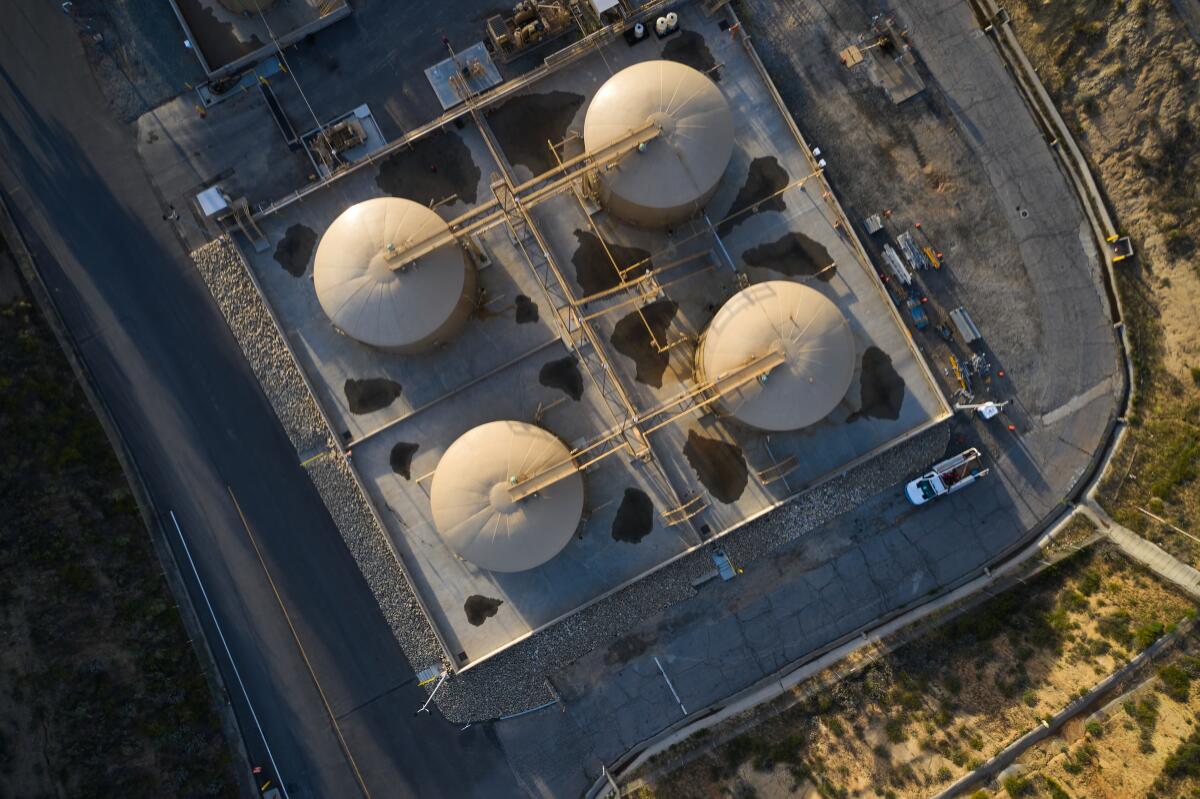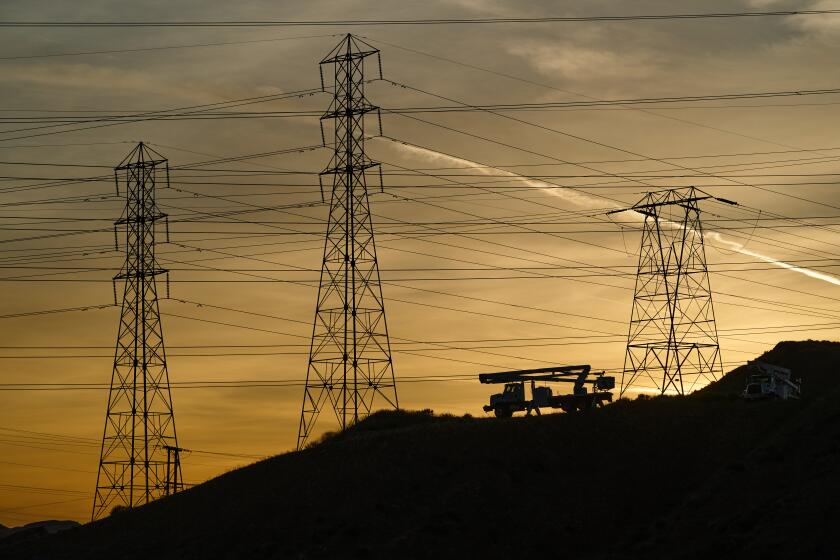Opinion: Who profits from Southern California’s high gas bills? The problem is we don’t know

The doubling and in some cases quadrupling of Southern Californians’ natural gas bills in recent months stemmed from rapid price spikes in the so-called spot market, a real-time wholesale market for the fuel. The lack of transparency in California’s spot market for gasoline played a similarly major role in the pummeling California drivers took at the pump last year.
The secrecy surrounding transactions in both of these markets keeps the public in the dark about who is making a fortune off their pain. Transparency would not only reveal the profiteers but could also discourage future gouging.
Southern California Gas Co., the monopoly that provides gas in Southern California, usually draws down its stored inventory of gas in the winter instead of buying it during the colder months, when it is most expensive. This year, however, rather than tap its inventory, the utility chose to buy massive quantities of gas on the spot market — where someone made a fortune off natural gas prices that were 10 times higher than usual.
The public does not know who reaped this windfall, but it is in our interest to find out. SoCalGas’ parent company, Sempra Energy, has an energy trading arm that sells gas to the utility. Did SoCalGas’ decision to buy on the spot market at a peak drive up the price and help an affiliated company make a killing?
At a public hearing of the California Public Utilities Commission on Monday, SoCalGas made the case for a massive increase in revenue over the next four years. Callers and community advocates expressed frustration.
Unfortunately, that remains unclear because spot market transactions in natural gas are shielded from public scrutiny. Comparable electricity transactions, by contrast, were made public after Enron traders took advantage of deregulation to loot California. Now every electricity trade on the spot market is published, deterring such misconduct.
The Federal Energy Regulatory Commission, or FERC, has the power to publish natural gas spot market transactions but has never done so. The nonprofit group Public Citizen has petitioned the agency to change that. Southern Californians, who just paid the highest natural gas bills in America, have a right to know who got their hard-earned money.
Natural gas isn’t the only fuel that Californians found themselves paying dramatically more for in recent months. At one point in October, California gasoline prices rose to $2.60 more per gallon than the U.S. average. The enormous gap powered historic profits for oil refiners, which doubled their profits per gallon in the West last year, according to their own public reports to investors. Gasoline prices that soared past $6 a gallon caused incalculable pain for low-income families, some of whom had to choose between filling their tanks and putting food on the table.
How can oil refiners charge Californians so much more at the pump when their production costs, as evidenced by their profits, don’t justify it? California oil refiners set the price they charge station owners for gasoline based not on their costs but on the price of California gasoline on the spot market — a market controlled by the five oil refiners that make 98% of our gasoline, along with a small group of traders.
A proposal by Gov. Gavin Newsom to cap the profits of oil refiners to prevent price gouging is a good idea. Oil companies shouldn’t be able to fleece Californians.
Like the analogous natural gas market, California’s gasoline spot market is shrouded in secrecy, making it vulnerable to manipulation. The California attorney general’s office is suing traders SK Energy and Vitol for allegedly manipulating the spot market after Exxon’s Torrance refinery went down in 2015. The companies are accused, among other things, of making trades in which no gasoline changed hands solely to drive up the price of the fuel.
This is possible because no public ledger of trades on the gasoline spot market exists — only voluntary reports to the Oil Price Information Service, an oil industry news service. Nothing requires disclosure of a trade, its quantity or the identity of the buyer or seller. Nor is there a record of how many trades occur in a given day. The service publishes only a spot market price.
That means a single trade can set the price of all retail gasoline in the state for days or weeks. When the spot price is high, there is no incentive to report a trade. Robert McCullough, an economist who has studied energy markets for decades, testified before a state Senate committee recently that at the height of the spikes last fall, the spot price for gasoline didn’t change for two weeks. If that had happened with the Dow, he wondered, wouldn’t someone have noticed?
California’s Legislature, which is considering how to avoid future spikes in gas prices, should make transactions on the spot market public. Federal regulators, meanwhile, already have the power to impose similar transparency on the natural gas market. Shedding some sunlight on prices could help Californians weather future winters.
Jamie Court is the president of the Los Angeles-based nonprofit Consumer Watchdog.
More to Read
A cure for the common opinion
Get thought-provoking perspectives with our weekly newsletter.
You may occasionally receive promotional content from the Los Angeles Times.












